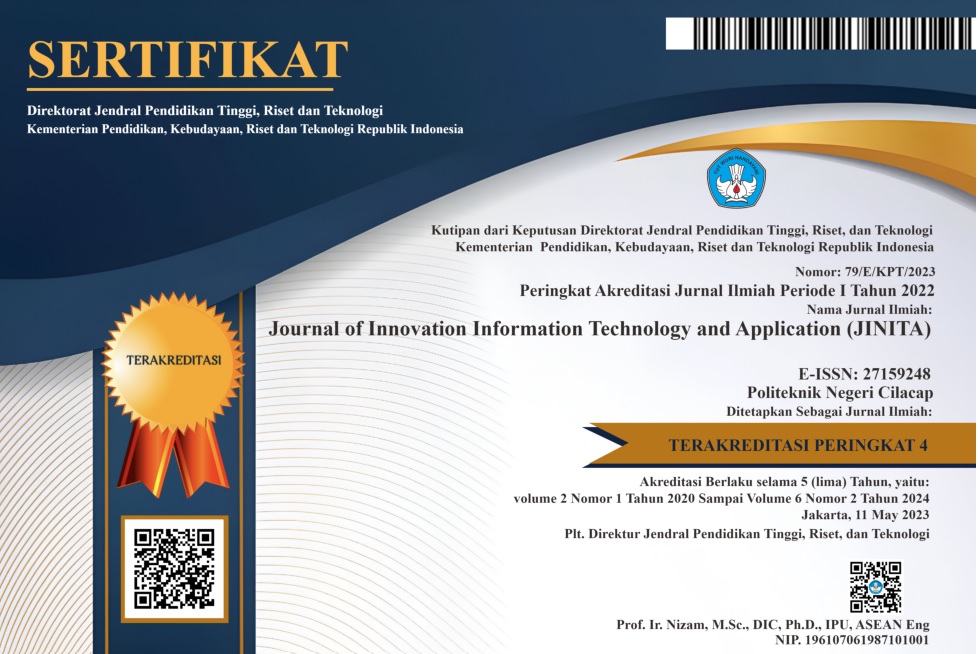Prediksi Penyakit Ginjal Kronis Menggunakan Hibrid Jaringan Saraf Tiruan Backpropagation dengan Particle Swarm Optimization
 Abstract views: 148
,
Abstract views: 148
,
 PDF (Bahasa Indonesia) downloads: 162
PDF (Bahasa Indonesia) downloads: 162
Abstract
The number of Chronic Kidney Disease patient increased year by year while it doesn’t following by sufficient human resources and infrastructure needs the information of Chronic Kidney Disease patient prediction. Prediction of Chronic Kidney Disease patient is necessary to be done as an anticipation for preparing the better human resources and infrastructure that will effect to patient survival rate. In this study, backpropagation artificial neural network and particle swarm optimization combination used to predict the number of Chronic Kidney Disease patient. Artificial Neural Network has the ability in time series data prediction, such as the number of Chronic Kidney Disease year by year. But, backpropagation artificial neural network has a weakness in weight inisialization which taken unoptimally that could cause bad convergence speed. Particle swarm optimization will resolve the backpropagation artificial neural network weakness by weights optimization that will used in backpropagation artificial neural network. The Artificial Neural Network and Particle Swarm Optimization have several parameters, such as the number of hidden layer neuron, learning rate, and swarm. This research is using RSUD Banyumas Chronic Kidney Disease patient data in 2011 until 2020. Matlab R2019a used in this research as a software to predict chronic kidney disease patient data. The test results shows the prediction accuracy based on Mean Squared Error value is 0,0370 using 12-16-1 artificial neural network architecture, 0.005 learning rate, 1250 epochs and 50 swarms
Copyright (c) 2021 Journal of Innovation Information Technology and Application (JINITA)

This work is licensed under a Creative Commons Attribution 4.0 International License.
Authors who publish with this journal agree to the following terms:
- Authors retain copyright and grant the journal right of first publication with the work simultaneously licensed under a Creative Commons Attribution License that allows others to share the work with an acknowledgement of the work's authorship and initial publication in this journal.
- Authors are able to enter into separate, additional contractual arrangements for the non-exclusive distribution of the journal's published version of the work (e.g., post it to an institutional repository or publish it in a book), with an acknowledgement of its initial publication in this journal.
- Authors are permitted and encouraged to post their work online (e.g., in institutional repositories or on their website) prior to and during the submission process, as it can lead to productive exchanges, as well as earlier and greater citation of published work (See The Effect of Open Access).
















